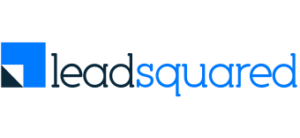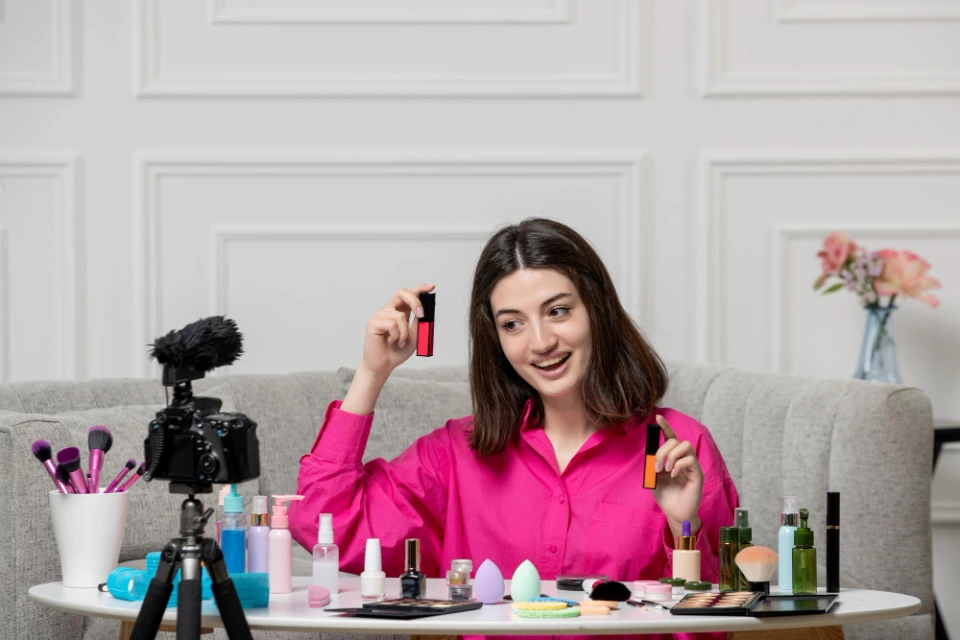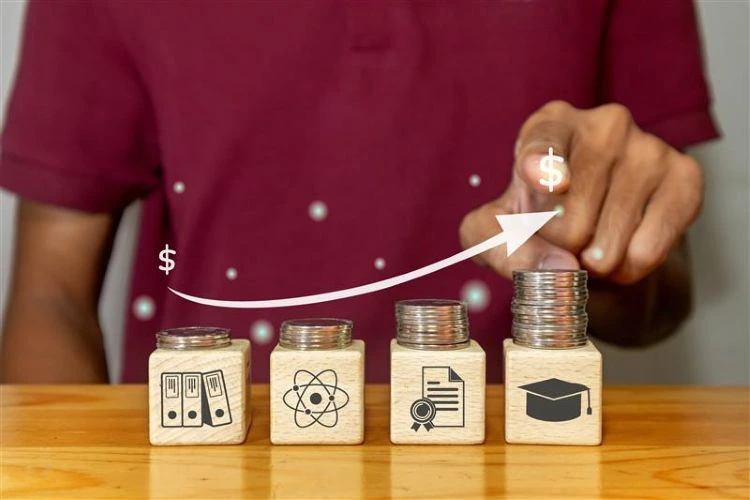The modern beauty school marketing landscape is defined by a dual transformation: a dramatic evolution in search engine optimization (SEO) that de-prioritizes organic traffic and an urgency to adopt authentic, student-driven content. For administrators and marketing teams managing enrollment targets, recognizing and adapting to this new reality is not merely helpful—it is foundational to sustained success. The comfortable days of relying on steady, inexpensive organic traffic are over. Institutions must now view paid media as a primary engine and authenticity as a critical multiplier of conversions.
The digital environment is more competitive than ever, especially in the localized yet national cosmetology & beauty schools market. This shift demands agile, data-driven decision-making, moving away from generalized marketing tactics toward high-intent, conversion-focused digital strategies.
The evolution of traditional SEO and the rise of paid dominance
The often-alarmist declaration that “SEO is dead” is profoundly misleading. Instead, the practice has undergone a fundamental evolution, transitioning from a traffic-driver to a trust-builder and an AI-feed. Schools that once generated hundreds of organic leads monthly are now seeing those numbers dwindle not because they stopped creating content, but because the structure of the search results page has changed.
AI overviews and the zero-click reality
The implementation of AI overviews at the top of Google search results and the growing capability of large language models (LLMs) have fundamentally altered user behavior. These AI-generated summaries pull information from multiple sources and often answer a user’s query directly on the search results page (zero-click search). This devastatingly reduces click-through rates to educational institution websites, weakening the organic traffic pipeline that schools once relied upon. For beauty schools that invested heavily in content to rank for high-volume keywords, this represents a significant challenge.
However, this change underscores a shift in SEO’s purpose. As industry experts note, the investment in SEO is not decreasing; it is simply serving a different function. SEO now focuses on topical authority and E-E-A-T (Experience, Expertise, Authoritativeness, and Trustworthiness). By creating comprehensive, detailed, and compliant content, schools feed the AI algorithms and maintain brand presence, ensuring they are cited in the overviews, even if the direct click is lost.
The necessity of paid digital marketing
In this new environment, relying on SEO alone is a recipe for inadequate lead flow. The strategic hierarchy of digital ad spend is now crucial for success in the competitive educational sphere. As organic traffic declines, more institutions pour money into paid advertising, creating a vicious cycle of increasing costs. In a webinar, Chris Sheppard from Tricoci University highlights this reality: “Cost per lead have gone up across the board for everyone. Competition, depending on where you’re at, is a lot different than it was last year, just because everyone is relying more on paid search.”
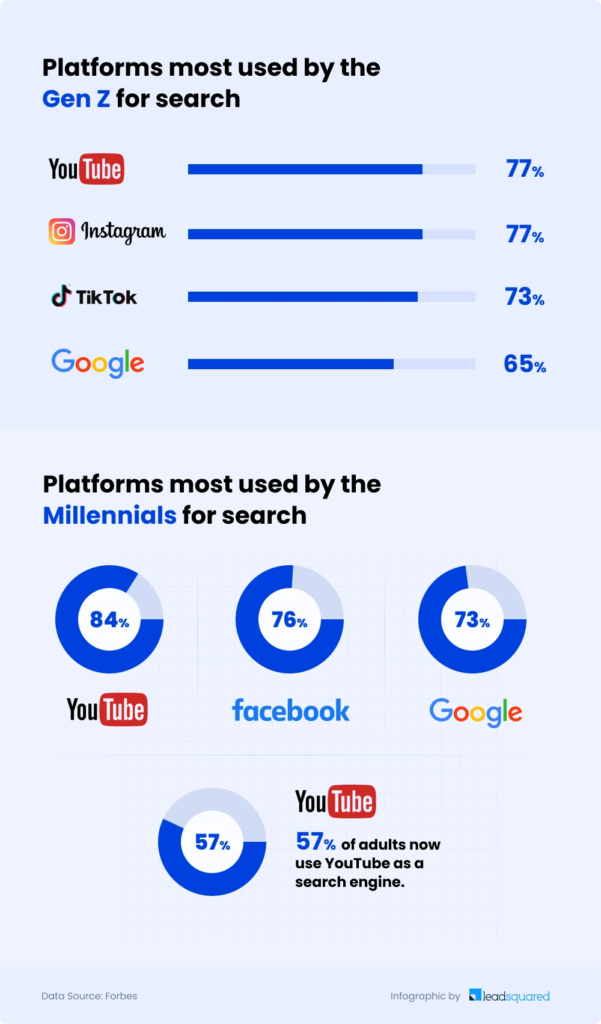
For beauty schools, this necessitates a budget reallocation, viewing paid digital marketing not as a supplement, but as the primary lead generation engine to win the highly contested cosmetology & beauty schools market.
The strategic hierarchy of digital ad spend
When allocating a limited marketing budget, a clear, quality-based strategy is non-negotiable. Martin Durlak, a digital marketing agency owner who works with numerous beauty schools across North America, proposes a compelling framework prioritized by conversion intent:
- Brand searches (Highest intent): These are individuals specifically looking for your school (e.g., “Empire Beauty School tuition” or “Tricoci University near me”). These represent the highest-intent, lowest-cost leads. Schools must ensure they capture every possible brand search before investing heavily elsewhere.
- Program searches (High intent): Users searching for specific educational categories (e.g., “cosmetology school,” “esthetics program near me”). These leads are ready to enroll but are evaluating competitors.
- Career change searches (Medium intent): Broader, top-of-funnel queries (e.g., “best career for creative people,” “education options for a new career”). These require longer nurturing but expand the market reach.
By following this hierarchy, schools invest their dollars where the highest probability of enrollment exists, a critical maneuver given the rising costs in the digital competition.
Optimizing for conversion in a paid environment
When every click carries a cost, conversion optimization is paramount. The difference between the average 2-3 leads per 100 clicks and an optimized rate of 7-8% (or higher in niche markets) determines the long-term viability of a school’s digital advertising budget. Every element of the landing page, from load speed to form design, is a factor in profitability.
The paramount importance of page load speed
Page load speed is arguably the most critical conversion factor. Research shows a dramatic relationship between page load time and bounce rate. Durlak shares sobering statistics: “If your page loads over a second to a second and a half, you’re losing. Under a second, the bounce rate is about 8-10%. If you get in the 3-4 second range, you’re losing 30-40% of that traffic.” For schools paying premium prices for high-intent keywords, a slow-loading page is literally throwing money away. Developers must prioritize code minification, image compression, and server response time to ensure a sub-one-second load time, especially on mobile devices.
Landing page distinction and conversion elements
In the paid advertising ecosystem, it is crucial to understand the difference between the landing page and the main website.
- Website: Should contain every piece of comprehensive, compliant information (tuition, schedules, licensing) to maximize organic visibility and satisfy AI algorithms.
- Landing page: Must be hyper-focused. The ethos is less is more. Because you are paying for traffic, the page must eliminate distractions, featuring only compelling calls-to-action (CTAs) and the minimal information necessary to drive the conversion.
Crucial optimization elements for paid landing pages include:
- Mobile-first design: Given that most beauty school prospects browse on smartphones, the page must be designed and tested on mobile first.
- Smart form fields: Implementing fields that automatically switch to the number keypad when requesting a phone number on a mobile device reduces friction.
- Form validation: Showing users exactly what format is expected (e.g., area code format, required fields) prevents frustrating submission errors.
- Clear CTAs: Calls-to-action must stand out visually, using contrasting colors and action-oriented language.
You can use templates from a marketing automation platform like LeadSquared, to create landing pages.

Lead nurturing through automated communication
Once a lead is captured, whether from a high-intent Google search or a lower-intent Meta campaign, the nurturing process begins. Meta platforms (Facebook and Instagram) are crucial for brand awareness, but their leads often have an extended conversion timeline—sometimes taking a year to enroll. This requires sophisticated follow-up.
This is where targeted strategies like email marketing for salons & beauty schools become essential. Automated marketing funnels must be implemented to manage lead flow and maintain communication based on the lead’s source and intent.
Effective email marketing for salons & beauty schools involves:
- Segmentation: Grouping leads by program interest, source (Paid Search vs. Social), and stage in the enrollment funnel.
- Personalization: Using the student’s name, preferred program, and location to make emails feel one-to-one rather than bulk.
- Value-driven content: Providing transparent information on tuition, FAFSA assistance, program schedules, and, crucially, success stories from graduates.
- Compliance integration: Utilizing CRM systems to track every communication touchpoint, ensuring timely follow-up from admissions advisors.
For smaller schools with limited advisory staff, the focus should remain on higher-converting search leads to manage volume. As Durlak advises: “I’d probably focus more on search, less on meta, because I only have one advisor, maybe, so I don’t want to have 300 leads that are lower converting. I’d rather have maybe 100 that are higher converting.”
The power of authentic content: UGC, TikTok, and trust building
In an era defined by skepticism toward corporate advertising, beauty school marketing has been revolutionized by authentic, unfiltered content. Beauty schools are discovering that their most powerful assets are the genuine moments captured by their own students on smartphones—known as user-generated content (UGC).
The authenticity imperative
UGC consistently drives the highest engagement and conversion rates. Sheppard notes: “User-generated content has performed the best for us thus far, and it’s free.” Prospective students are not looking for polished, scripted testimonials; they want authentic glimpses into the daily life of a student—the challenges, the excitement, and the real outcomes. This deliberate move toward low-production, cell phone-recorded content is not about cutting costs; it is about speaking the visual language of the target Generation Z audience.
TikTok as the new primary discovery tool
Perhaps no platform better exemplifies this shift than TikTok, which is increasingly functioning as a primary search engine. Jenn Lyles, Executive Director of Beauty Schools Marketing Group, states that “51% of Gen Z is now ditching Google and taking searches to TikTok. They’re going to the top corner, and they’re typing in ‘Restaurants Miami.’ They’re not doing that on Google anymore.”
This behavioral change is a massive implication for the cosmetology & beauty schools market. Students are actively searching for career information, school reviews, and program details on the platform. Strategic schools are adapting by taking high-volume Google search questions and answering them on TikTok in short, educational video format (e.g., “What are the four steps to enroll?”). This approach positions the school to capture traffic regardless of where students begin their search journey.
Building a culture of content creation
Authentic content requires a cultural shift within the school, moving beyond simply asking students to post occasionally. It requires systematic encouragement and empowerment:
- Leadership buy-in: Administrators must understand that smartphone recordings are a form of professionalism in the modern digital age and must be prioritized over sterile, polished productions.
- Staff empowerment: Every staff member, from instructors documenting technique demonstrations to admissions representatives capturing campus tour moments, becomes a potential content creator. Jenn Lyles advises: “If you are at your school, if you’re a teacher, get out your camera! This is going to be fun.”
- Systematic collection: Schools can systematize content flow by encouraging their locations to send authentic video content weekly to a central social media team, ensuring a steady stream of fresh, platform-native material.
The convergence of organic content and paid strategies is the most effective approach. UGC performs exceptionally well in paid campaigns because it offers authentic social proof and higher engagement rates than traditional ad creative, creating efficiency in content creation and budget allocation. Importantly, schools must use platform-specific expertise, recognizing that TikTok favors vertical video with trending audio, while Instagram Reels or Facebook require different pacing and content length.
Future-proofing through transparency and graduate empowerment
The long-term success of any beauty school marketing strategy rests on transparency, continuous testing, and supporting the student experience beyond graduation.
Information transparency and E-E-A-T
The rise of AI has made information transparency non-negotiable. Schools that gatekeep information—withholding details on schedules, tuition, or licensing to force a phone call—are being penalized by search algorithms. AI systems, which prioritize E-E-A-T, rely on schools being “very open and forthcoming with the answers to the questions that the searcher is asking for.” This means writing content in a snippet-style format that directly answers questions, providing tuition information, hours of operation, and licensing details openly on the website.
Technology investment and performance metrics
Schools must invest in the proper technology to track and measure performance effectively. This includes:
- CRM integration: Connecting digital ad platforms (Google, Meta) directly to the Customer Relationship Management system to track the entire journey from click to enrollment.
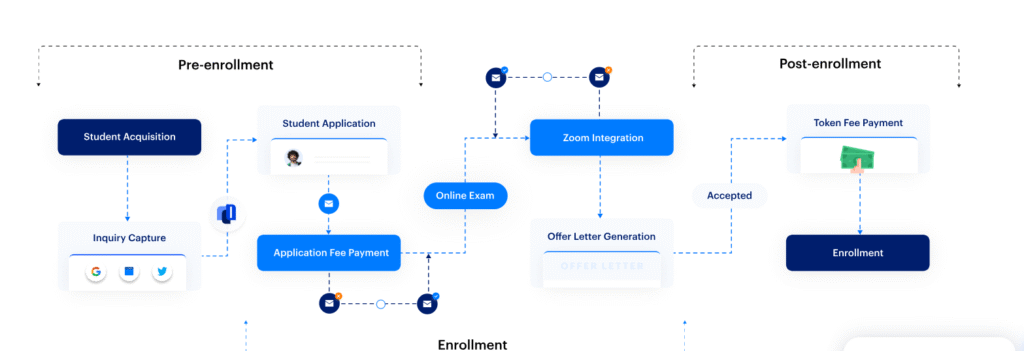
- Performance metrics evolution: Shifting from measuring vanity metrics (website traffic, follower count) to focusing on tangible outcomes like Cost Per Enrollment and Lifetime Student Value (LTV).
- Continuous testing: Adopting a culture of constant optimization, where A/B testing is applied to every element of the marketing funnel, from ad copy and creative to landing page CTAs.
Empowering success with beauty school graduate marketing tools
The value of a school is often measured by the success of its alumni. By providing robust post-graduation support, schools activate a powerful, self-sustaining marketing engine—referrals. Durlak shares that some highly successful clients generate 40% of their students from referrals, driven by a positive, supportive culture where “it feels like one big family.”
To sustain this, schools must equip their alumni with beauty school graduate marketing tools. These resources serve the dual purpose of helping graduates launch their careers and generating authentic marketing proof for the school.
Key components of effective beauty school graduate marketing tools include:
- Digital portfolio templates: Providing easy-to-use templates (e.g., Canva or specialized platforms) for graduates to showcase their best work from school in a professional, client-facing manner.
- Social media business guides: Step-by-step guides on setting up professional Instagram, TikTok, and even LinkedIn accounts, including advice on photo lighting, content types, and ethical client privacy.
- Pricing and business management worksheets: Practical worksheets to help new professionals calculate overhead, set service prices, and track inventory—tools essential for independent stylists.
- Alumni network and referral incentives: A platform or dedicated communication channel that allows graduates to network, seek advice, and, most importantly, provides incentives for referring future students to the school.
By providing these essential beauty school graduate marketing tools, schools transform alumni into successful professionals and powerful brand advocates, closing the loop on the marketing cycle: authentic student experience leads to enrollment, graduate success leads to compelling content, which, in turn, drives future enrollment.
You can gain more insights from this webinar:
The bottom line
The future of beauty school marketing isn’t about bigger budgets; it’s about agility, authenticity, and investing in the success of the students and graduates who are the institution’s best spokespeople. The schools that embrace this reality and adapt their technology, budget, and culture will not just survive, but thrive, in the evolving digital landscape.
The key to thriving in this new era lies in aligning your marketing, admissions, and student engagement strategies under one intelligent platform. LeadSquared CRM empowers career and beauty schools to automate their lead capture, personalize follow-ups, and track every prospective student from inquiry to enrollment. By connecting marketing and admissions workflows, schools can reduce manual effort, improve conversion rates, and deliver a seamless experience to students who expect instant, digital-first communication.
Beyond managing admissions, LeadSquared gives you the tools to supercharge your beauty school digital marketing efforts. With built-in campaign tracking, analytics, and integrations, you can measure ROI in real time, optimize marketing spend, and identify which channels truly drive enrollments. Whether you’re running local outreach campaigns or scaling national programs, LeadSquared helps you make data-driven decisions that translate directly into student success.
Ready to transform your school’s growth journey?
Frequently Asked Questions (FAQs)
How has SEO for beauty schools evolved, and why is it no longer the primary source of leads?
SEO has not died; it has evolved from a traffic-generation strategy to a trust and authority strategy. It is no longer the primary lead source because search engines now often answer queries directly on the search results page (zero-click search) using AI-generated summaries. These changes have drastically reduced click-through rates. Modern SEO focuses on building topical authority and demonstrating E-E-A-T (Experience, Expertise, Authoritativeness, and Trustworthiness) to ensure the school is cited by AI, even if the user doesn’t visit the website. This requires extreme content transparency regarding tuition, licensing, and program details.
Why is user-generated content (UGC) more effective than professional advertising in the cosmetology & beauty schools market?
UGC is more effective because it builds immediate trust and resonates authentically with prospective students. The target audience, predominantly Gen Z, can instantly distinguish between manufactured advertising and genuine peer content. UGC, typically shot on a cell phone, provides an unfiltered look into the daily student experience—the “Day in the Life” trend—which allows prospects to envision themselves in that role. This authenticity drives higher engagement and conversion rates than polished, traditional creative assets, especially on platforms like TikTok, which functions as a discovery engine.
Where should a beauty school primarily allocate its digital advertising budget?
The budget should be allocated based on intent, following a strategic hierarchy. Brand searches (people searching for the school’s name) should receive 100% budget coverage first, as they represent the highest-intent, lowest-cost leads. After brand searches, the budget should target program searches (e.g., “cosmetology school”) and then career change searches (broader intent). This focused approach ensures the school maximizes its return on investment (ROI) by capturing the most qualified, ready-to-enroll traffic from the competitive cosmetology & beauty schools market.
How can beauty schools attract more qualified leads?
Attracting qualified leads for beauty schools requires a mix of digital marketing, social proof, and streamlined follow-up processes. Schools should invest in platforms like Google Ads, Instagram Reels, and YouTube Shorts showcasing student success stories and campus life. Lead magnets—such as free beauty workshops or downloadable guides on “How to Start a Career in Cosmetology”—help capture potential students’ interest.
However, attracting leads is only the first step. Converting them efficiently is what truly drives enrollments. That’s where the LeadSquared Career School CRM makes a difference. It automates lead capture from all channels (social media, website, ads, and phone calls), assigns them instantly to admissions teams, and ensures no inquiry slips through the cracks. The CRM’s communication automation also helps schools nurture students through personalized email and WhatsApp campaigns, increasing conversion rates significantly.
How can beauty schools improve student enrollment follow-ups?
Many beauty schools struggle to follow up effectively with inquiries, especially when leads come from multiple sources like Facebook, call centers, or walk-ins. Manual tracking often leads to missed opportunities and delayed responses.
Using the LeadSquared Career School CRM, beauty schools can automate their follow-up process completely. The system triggers instant reminders and personalized messages for counselors whenever a new inquiry is logged. It also records all student interactions—from the first call to final enrollment—ensuring counselors have full context before every conversation.
With real-time dashboards, school administrators can see which campaigns and counselors perform best, enabling smarter decisions. In short, LeadSquared helps beauty schools reduce response time, improve conversion rates, and deliver a seamless experience for every prospective student.
